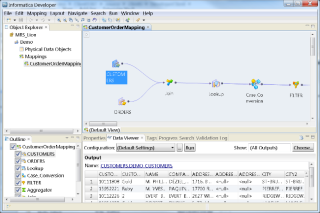ZPanel y Sentora en CentOS 6 x64

ZPanel, un panel de control de alojamiento web popular, se bifurcó en 2014 a un nuevo proyecto llamado Sentora. Aprende a instalar Sentora en tu servidor con este tutorial.
Cuberite is a scalable, open-source Minecraft server implementation that is written in C++. It has an easy-to-use plugin system that allows for users to write custom plugins with Lua and was originally created under the MCServer name.
Cuberite is multi-platform and will work with most Linux operating systems and Windows. This tutorial will only cover the installation of the server software on a CentOS 6 or 7 installation. Like most Minecraft servers, plugins and other factors will contribute to a larger memory footprint. To start off, it is suggested that you have at least:
Vultr offers these specifications for $5 per month (including 25 GB of SSD and a terabyte of bandwidth).
Before we begin, we have to make sure that the system is up to date and that we have an appropriate text editor. This will be necessary for configuring the server. We will also need the appropriate tools to build and compile the software.
Before we install anything, execute the command below to update your system:
yum update -y
Now, we will install nano. (you may use vim or any other editor you prefer):
yum install nano -y
Once it finishes, run the following command to install cmake (the compiler):
yum install cmake -y
Now, install screen (allows applications to run in the background):
yum install screen -y
After screen installs, you can proceed to the next section.
Now that we have all the dependencies required for the installation to complete, we must retrieve the script. The commands below will create a new directory in /root, or ~.
cd ~ && mkdir server
cd server
wget -O install.sh https://compile.cuberite.org
Now, you can run the installation script:
sh install.sh
You will see the following message in your terminal:
[root@demo server]# sh install sh
Hello, this script will download and compile Cuberite.
On subsequent runs, it will update Cuberite.
The compilation and download will occur in the current directory.
If you're updating, you should run: <Path to Cuberite>/compile.sh
Compiling from srouce takes time, but it usually generates faster
executables. If you prefer ready-to-use binaries or if you want
more info, please visit: https://cuberite.org
Choose compile mode:
* (R)Release: Compiles normally.
Generates the fastest build.
* (D)Debug: Compiles in debug mode.
Makes your console and crashes more verbose.
A bit slower than Release mode. If you plan to help
development by reporting bugs, this is preferred.
Choose compile mode: (r/d) (Default: "Release"):
When you see the above, just hit ENTER on your keyboard.
You will now see the following:
Choose the number of compilation threads.
You have 2 CPU threads.
If you have enough RAM, it is wise to choose your CPU's thread count.
Otherwise choose lower. Old Raspberry Pis should choose 1. If in doubt, choose 1
.
Please enter the number of compilation threads to use (Default: 1):
You may choose to use more threads for the compilation (depending on the instance you have). Apart from this, all you have to do is hit ENTER.
Once you've done so, you will be prompted with following message:
#### Settings Summary ####
Build Type: Release
Branch: master (Currently the only choice)
Compilation threads: 1
CPU Threads: 2
Previous Compilation: Not detected. We are assuming this is the first compile.sh run.
Upstream Link: https://github.com/cuberite/cuberite.git
Upstream Repo: origin
After pressing ENTER, the script will connect to https://github.com/cuberite/cuberite.git
to check for updates and/or fetch code. It will then compile your program.
If you compiled before, make sure you're in the proper directory and that "Previous
compilation" is detected.
Press ENTER to continue...
This is the final step before the compilation will start. You will be told to hit ENTER to start the compilation. It will take roughly 15 minutes, depending on your system.
NOTE: Don't be alarmed if you see a bunch of text scrolling on your terminal. It will take some time for the system to fully compile the software into an executable package.
Once it completes, you will be greeted with the following message:
-----------------
Compilation done!
Cuberite awaits you at:
/root/server/cuberite/Server/Cuberite
You can always update Cuberite by executing:
/root/server/cuberite/compile.sh
Enjoy :)
This marks the end of the installation. You can proceed to the next section for the configuration of the server.
To configure your server, we must first locate and copy the compiled server out of our temporary directory:
cd cuberite
cp -r Server ~/server/cuberiteServer
cd ./cuberiteServer
Your server directory will now be located at /root/server/cuberiteServer and the configuration file will be located at /root/server/cuberiteServer/settings.ini.
We can now edit the configuration using any text editor:
nano settings.ini
You will see something that looks like the following:
[Server]
Description=Cuberite - in C++!
ShutdownMessage=Server shutdown
MaxPlayers=100
HardcoreEnabled=0
AllowMultiLogin=0
Ports=25565
In order to edit the maximum number of players that can be online at any given time, just modify the MaxPlayers=100 line to any number you desire.
For example, if you wanted a maximum of 25 players, all you'd have to do is change the line to MaxPlayers=25.
You can also change the port, but it is not recommended because of the increased difficulty for users to connect to your server (the default port for Minecraft servers is 25565).
If you're using nano, you can exit and save by doing CTRL + X, followed by ENTER.
To start the server, simply head to the server directory (/root/server/cuberiteServer) and start a screen:
cd ~/server/cuberiteServer
screen -S MinecraftServer && screen -r MinecraftServer
You can reconnect to the screen at any given time using the screen -r <screenName> command. We named the screen MinecraftServer, so reconnecting can be done by performing screen -r MinecraftServer.
Now, execute the server binary:
./Cuberite
It may take a few seconds for the terrain to generate before the server can be used. Also, use the following combination to exit the screen: CTRL + A + D.
In order to perform a hard-shutdown, all you need to do is use CTRL + C. To perform a graceful shutdown, enter the following command in the console:
stop
Assuming that you've already configured the firewall, you can enter your server address in the Minecraft client.
Your address should look like the following: 192.0.2.5:25565 (192.0.2.5 being your actual server address).
At this point, you can pass your server address along with a few friends and start building.
Removing the software is simple. All you have to do is make sure that the server is offline and run rm -rf ~/server.
ZPanel, un panel de control de alojamiento web popular, se bifurcó en 2014 a un nuevo proyecto llamado Sentora. Aprende a instalar Sentora en tu servidor con este tutorial.
Aprende cómo instalar Vtiger CRM, una aplicación de gestión de relaciones con el cliente, en CentOS 7 para aumentar tus ventas y mejorar el servicio al cliente.
¿Usando un sistema diferente? MODX Revolution es un sistema de gestión de contenido (CMS) de nivel empresarial rápido, flexible, escalable, gratuito y de código abierto escrito i
Vultr le ofrece una increíble conectividad de red privada para servidores que se ejecutan en la misma ubicación. Pero a veces quieres dos servidores en diferentes países.
Using a Different System? Introduction CyberPanel is one of the first control panels on the market that is both open source and uses OpenLiteSpeed. What thi
Using a Different System? ESpeak can generate text-to-speech (TTS) audio files. These can be useful for many reasons, such as creating your own Turin
¿Usando un sistema diferente? Thelia es una herramienta de código abierto para crear sitios web de comercio electrónico y administrar contenido en línea, escrito en PHP. Código fuente de Thelia i
¿Usando un sistema diferente? LibreNMS es un completo sistema de monitoreo de red de código abierto. Utiliza SNMP para obtener los datos de diferentes dispositivos. Una variedad
Cacti es una herramienta de gráficos y monitoreo de red de código abierto y libre escrita en PHP. Con la ayuda de RRDtool (herramienta de base de datos Round-Robin), Cacti se puede usar t
Usar un usuario sudo para acceder a un servidor y ejecutar comandos a nivel raíz es una práctica muy común entre Linux y Unix Systems Administrator. El uso de un sud
¿Usando un sistema diferente? Zabbix es un software gratuito y de código abierto listo para empresas que se utiliza para monitorear la disponibilidad de sistemas y componentes de red.
MODX es un sistema de gestión de contenido gratuito y de código abierto escrito en PHP. Utiliza MySQL o MariaDB para almacenar su base de datos. MODX está diseñado para el negocio i
YOURLS (Your Own URL Shortener) es una aplicación de análisis de datos y acortamiento de URL de código abierto. En este artículo, cubriremos el proceso de instalación
Using a Different System? RTMP is great for serving live content. When RTMP is paired with FFmpeg, streams can be converted into various qualities. Vultr i
LimeSurvey es una herramienta de encuestas en línea gratuita y de código abierto que se utiliza ampliamente para publicar encuestas en línea y para recopilar comentarios de encuestas. En este artículo, voy a
¿Usando un sistema diferente? Vanilla forum es una aplicación de foro de código abierto escrita en PHP. Es totalmente personalizable, fácil de usar y admite dispositivos externos.
¿Usando un sistema diferente? Netdata es una estrella en ascenso en el campo del monitoreo de métricas del sistema en tiempo real. En comparación con otras herramientas del mismo tipo, Netdata:
En este tutorial, aprende bien cómo configurar un servidor multijugador Just Cause 2. Requisitos previos Asegúrese de que el sistema esté completamente actualizado antes de comenzar
¿Usando un sistema diferente? En este tutorial, explicaré cómo configurar un servidor Starbound en CentOS 7. Requisitos previos Necesitas tener este juego contigo
ZNC es un enlace IRC gratuito y de código abierto que permanece permanentemente conectado a una red para que los clientes puedan recibir mensajes enviados mientras están desconectados. Thi
ZPanel, un panel de control de alojamiento web popular, se bifurcó en 2014 a un nuevo proyecto llamado Sentora. Aprende a instalar Sentora en tu servidor con este tutorial.
Aprende cómo instalar Vtiger CRM, una aplicación de gestión de relaciones con el cliente, en CentOS 7 para aumentar tus ventas y mejorar el servicio al cliente.
Esta guía completa le mostrará cómo configurar un servidor Counter-Strike 1.6 en Linux, optimizando el rendimiento y la seguridad para el mejor juego. Aprende los pasos más recientes aquí.
Los ataques de ransomware van en aumento, pero ¿puede la IA ayudar a lidiar con el último virus informático? ¿Es la IA la respuesta? Lea aquí, sepa que la IA es una bendición o una perdición
ReactOS, un sistema operativo de código abierto y gratuito, está aquí con la última versión. ¿Puede satisfacer las necesidades de los usuarios de Windows de hoy en día y acabar con Microsoft? Averigüemos más sobre este estilo antiguo, pero una experiencia de sistema operativo más nueva.
Whatsapp finalmente lanzó la aplicación de escritorio para usuarios de Mac y Windows. Ahora puede acceder a Whatsapp desde Windows o Mac fácilmente. Disponible para Windows 8+ y Mac OS 10.9+
Lea esto para saber cómo la Inteligencia Artificial se está volviendo popular entre las empresas de pequeña escala y cómo está aumentando las probabilidades de hacerlas crecer y dar ventaja a sus competidores.
Recientemente, Apple lanzó macOS Catalina 10.15.4, una actualización complementaria para solucionar problemas, pero parece que la actualización está causando más problemas que conducen al bloqueo de las máquinas Mac. Lee este artículo para obtener más información
13 Herramientas comerciales de extracción de datos de Big Data
Nuestra computadora almacena todos los datos de una manera organizada conocida como sistema de archivos de diario. Es un método eficiente que permite a la computadora buscar y mostrar archivos tan pronto como presiona buscar.





